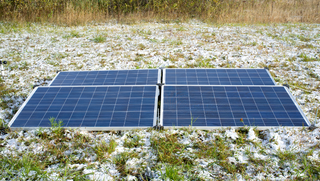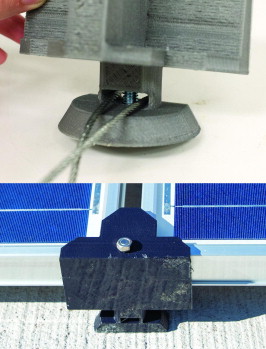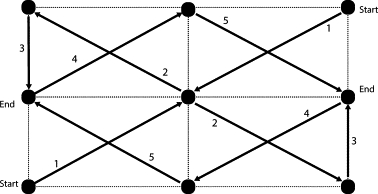3-D Printing Solar Photovoltaic Racking in Developing World
Source
- B.T. Wittbrodt & J.M. Pearce. 3-D printing solar photovoltaic racking in developing world. Energy for Sustainable Development 36, pp. 1-5 (2017). DOI:10.1016/j.esd.2016.08.001 open access
Abstract

The purpose of this paper is to provide a technical and economic evaluation of the value of the RepRap as an entry-level 3-D printer in the developing world and provide a cost effective solar photovoltaic (PV) racking solution to better serve the developing world and aid in the acceleration of their economic and socioeconomic growth. A customizable open-source PV racking concept is designed, prototyped for three types of modules, constructed into systems, and outdoor tested under extreme conditions for one year. An economic analysis is provided along with a technical evaluation of the system, which found the proposed racking system can be successfully printed with RepRap 3-D printers and saves between 85% and 92% from commercially available alternatives depending on the plastic used for printing. In addition, the plastic parts proved able to withstand some of the harshest outdoor conditions and due to the free and open-source nature of the designs, it allows the system to be adapted to custom applications in any region in the world more easily than any commercial alternatives. The results indicate that the 3-D printable X-wire solar photovoltaic racking system has the potential to aid in the acceleration of solar deployment in the developing world by providing a low cost PV racking solution.
Highlights
- RepRap evaluated as an entry-level 3-D printer in the developing world.
- For 3-D printing cost effective solar photovoltaic (PV) racking components
- Customizable open-source PV racking concept is designed, prototyped and tested.
- Results in 85% and 92% savings from commercially available alternatives
- Potential to aid acceleration of solar deployment in the developing world
Keywords
[Developing world]; [3-D printing]; [Sustainable development]; [Open-source]; [Photovoltaic]; Racking
X-Wire Racking System
- Source code for STLs and OpenSCAD: https://www.youmagine.com/designs/open-source-racking-for-solar-cell-modules

